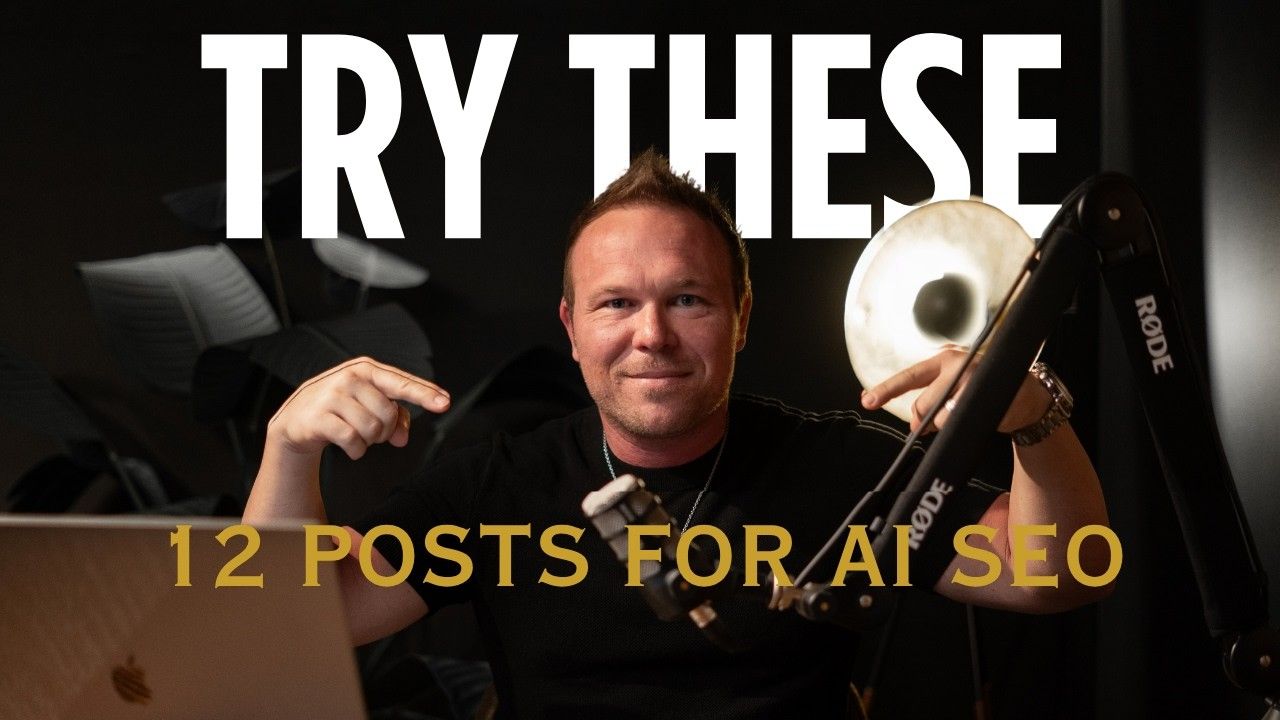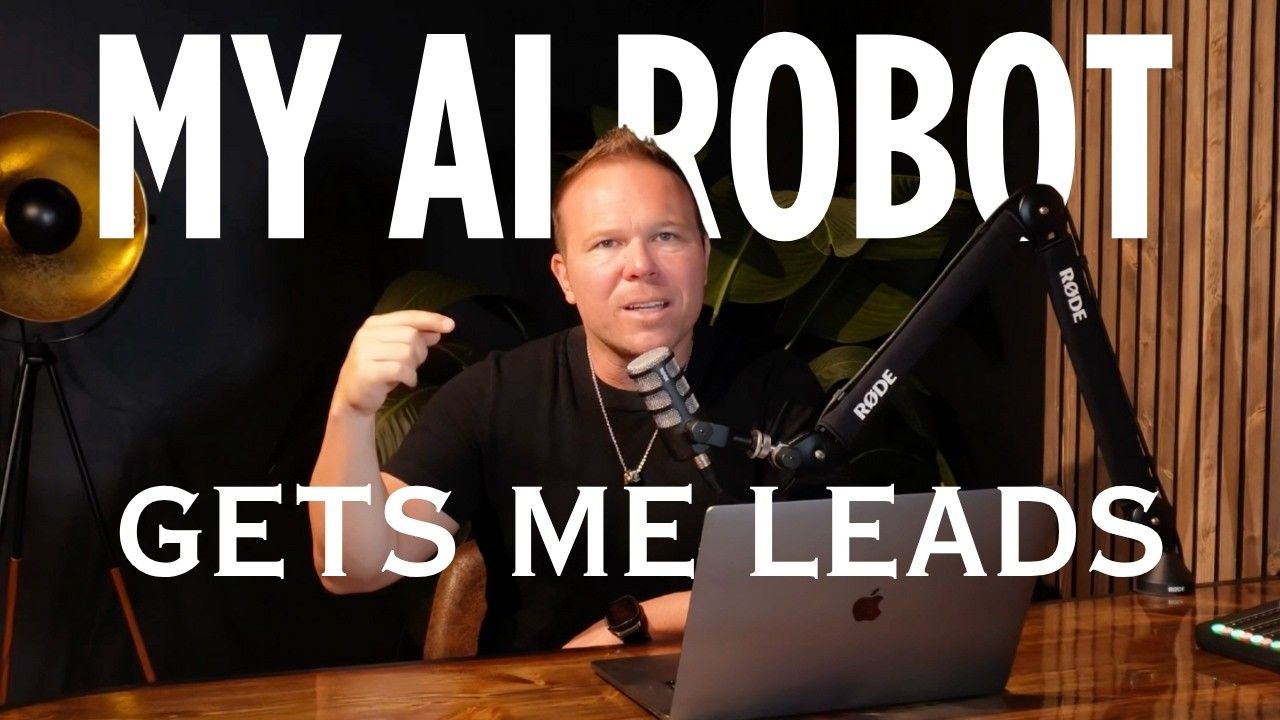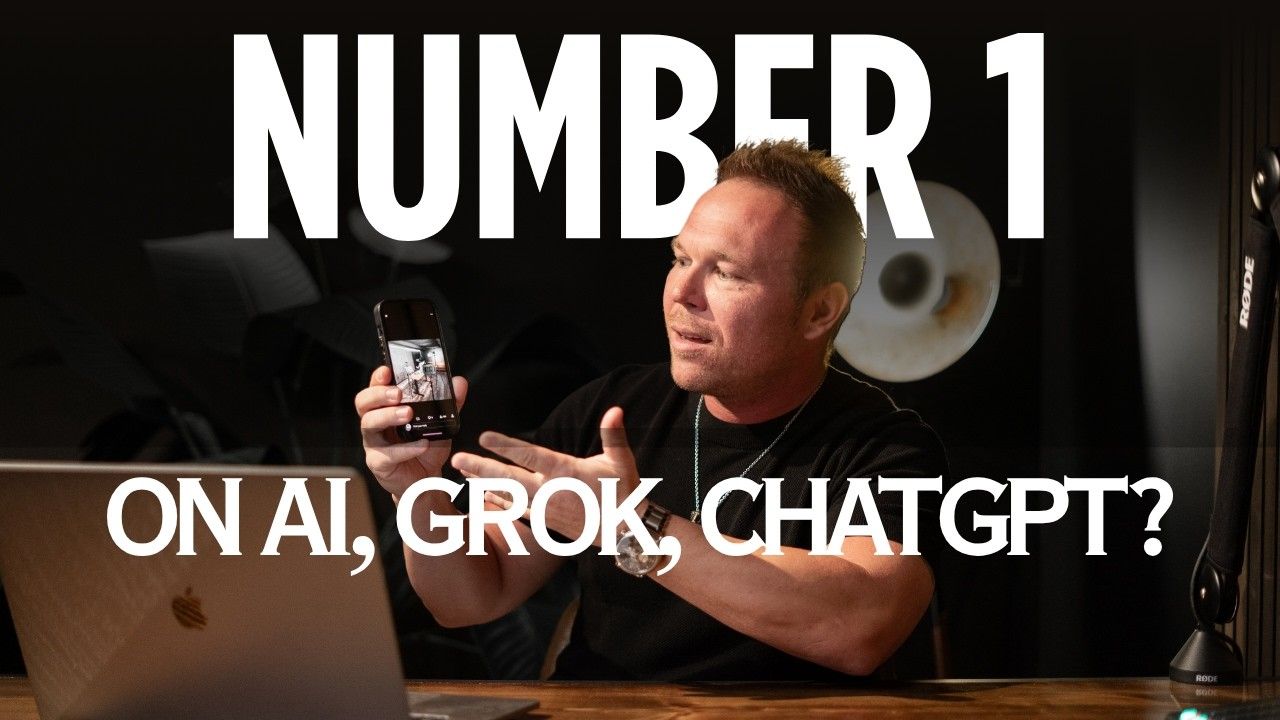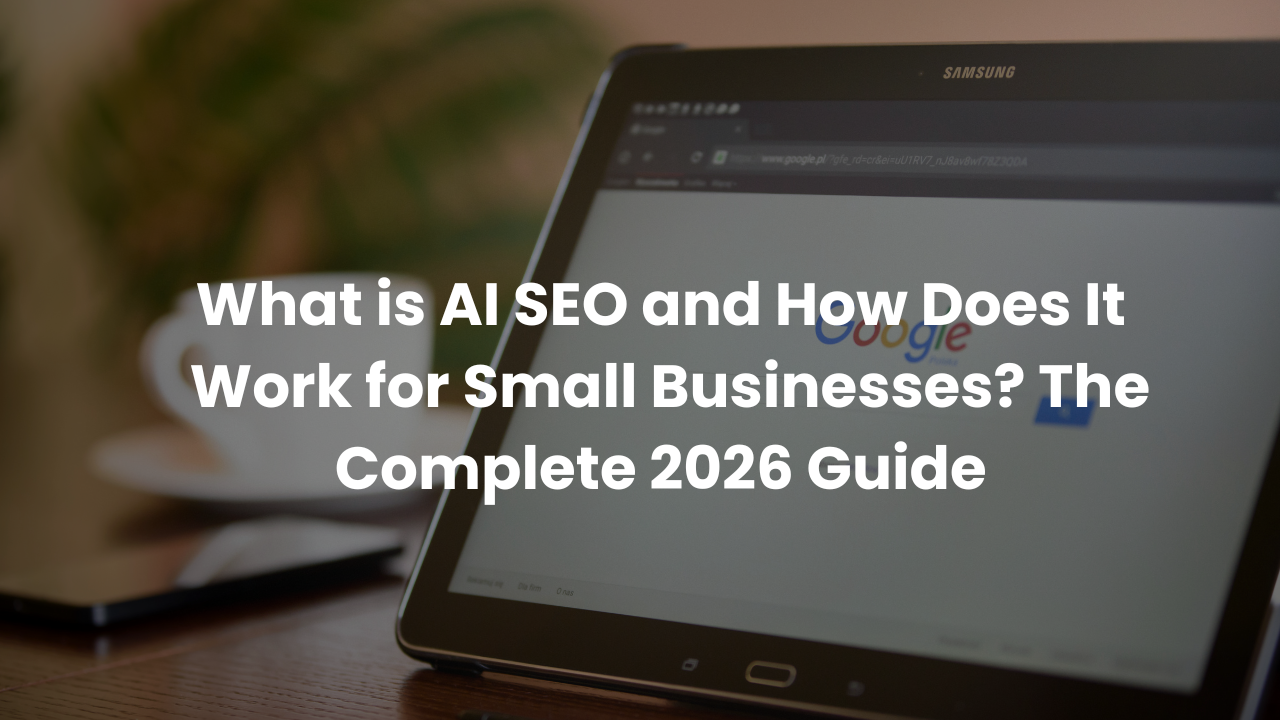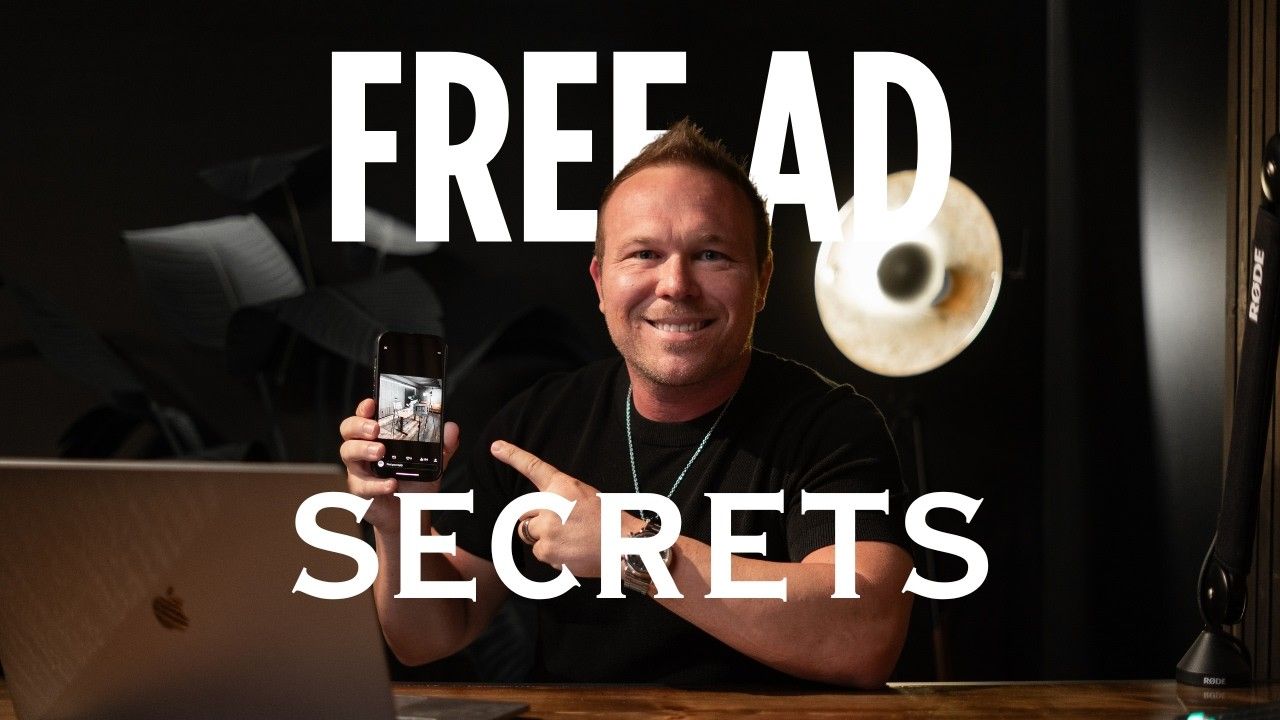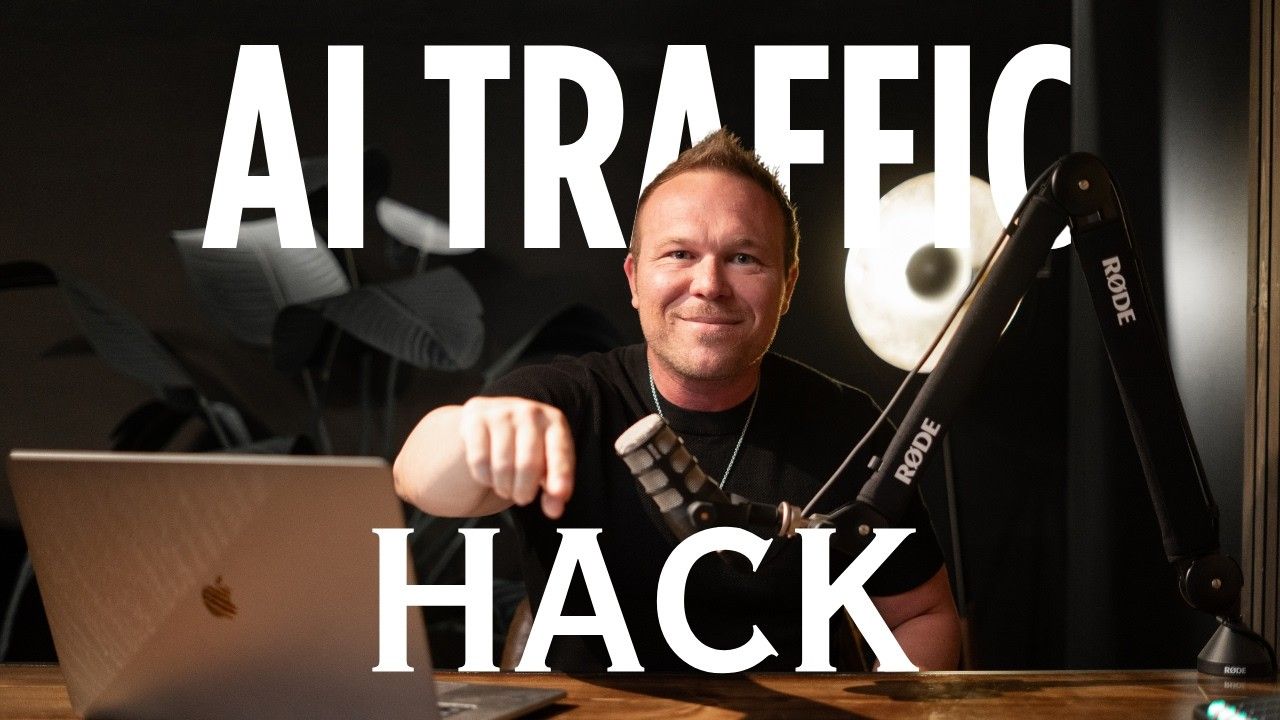How to Make Your First YouTube Video for Your Brand
What You’ll Learn in This Blog
1. How to Craft a Compelling Hook – Learn the secret to grabbing your audience’s attention right away.
2. How to Build a Personal Connection – Discover techniques to establish trust and authority on camera.
3. How to Create an Effective Video Script – Follow my bullet point system to structure your content clearly.
4. Tools & Tips to Overcome Camera Nerves – Simple, cost-effective tools that helped me produce over 700 videos.
5. How to Consistently Produce Videos for Lead Generation – A proven system to create three educational videos per week.
W hy This Strategy Works for Any Brand:
1. Engage Your Audience from the Start – A strong hook and clear message set you apart.
2. Build Trust and Authority – Authentic, educational videos make viewers more likely to become customers.
3. Simplify Video Production – Use a repeatable script and system to take the guesswork out of content creation.
4. Generate Consistent Leads – Consistent, high-quality video content builds a loyal audience and drives results.
Why is YouTube Channel Important?
As the world’s second-biggest search engine, YouTube helps businesses reach a wide, global audience and makes them easier to find on Google. By regularly posting content and using keywords, your video’s thumbnail can show up in relevant searches. Unlike other social media platforms, YouTube videos don't get buried under newer posts. They stay visible for a long time and can be shared across different platforms for various purposes.
If you're thinking about starting a YouTube channel for your brand, you might worry that the platform is too crowded. But YouTube is still growing and offers plenty of opportunities for creators. Even if you cover popular topics, your brand’s unique personality and point of view will set you apart from others. New channels are always popping up as interests shift, and older channels fade. There’s always space for fresh talent. If you create high-quality content on topics your audience cares about, YouTube’s algorithm will help push your videos to the top. It may take time, but with dedication, you can build a successful YouTube channel for your brand.
YouTube marketing offers tons of benefits for your business. YouTube has a huge, active user base, so publishing quality content can give you lots of exposure and traffic. You can also work with popular creators to expand your reach even further.
Since YouTube is closely tied to SEO and social media, having a strong presence on the platform can help you reach even more people, including outside of YouTube. The platform is available in over 100 countries and 80 languages, and with features like auto-translated captions, you can easily target global audiences. YouTube can also improve your visibility on Google. Many search results now feature video carousels, most of which come from YouTube. By optimizing your YouTube SEO, you'll also improve your chances of appearing in Google search results.
Overcoming Anxiety and How to Get Started
Starting something new can be intimidating, especially when it’s as public as creating videos for YouTube. You know you should be making videos, but where do you even start? If this sounds familiar, you're not alone. I remember being nervous for six months before finally hitting "record" on my first video. And when I did, it was awful. But fast forward seven years and 700 videos later, I've finally found a rhythm. Sure, I’m still not 100% comfortable on camera, and even this video you're watching is my second take, but I've found ways to make the process smoother and way less stressful.
When you think about it, creating a YouTube video is more doable than it seems. It might take more time than sharing a few photos on Instagram or making a 15-second TikTok, but YouTube videos usually have a longer "lifespan," especially if the content is evergreen.
The First Take Will Be Awful — And That’s Okay!
I’m here to tell you that your first few videos might not be perfect, and that’s totally fine. My first video was, well, let’s just say it wasn’t the polished, expert-level content I imagined it would be. In fact, it was awful. But guess what? That’s part of the journey. The most important part is that you push through those early awkward moments and keep going. Every video you make will help you improve, get more comfortable on camera, and learn how to engage your audience.
In this blog, I'm going to walk you through the exact system, tools, and tricks that helped me not only overcome my fear of creating videos but also helped me build a sustainable routine of creating content that drives leads and educates my audience.
Step 1: Crafting a Compelling Hook
The first few seconds of your video are critical for capturing your audience’s attention. This is where the hook comes into play — it’s the moment you need to make viewers stop scrolling and pay attention. Crafting an effective hook is all about hitting the right chord with your audience’s pain points and offering a quick, easy solution.
Identify the Core Pain Point Your Audience Faces
Before you start shooting your video, think about what problem your target audience is struggling with. If you’re creating content around a topic, chances are there’s a specific challenge or question your audience has that you can solve. Jot down some video ideas to get started. For example, if you’re talking about how to create your first YouTube video, the pain point could be the overwhelming feeling of not knowing where to start or the fear of looking unprofessional.
Create a Hook That Promises a Simple Solution
Your hook should quickly communicate the value your video provides. It needs to promise a solution to that pain point in a way that sounds simple, relatable, and actionable. Something like, “In today’s video, I’m going to show you how to easily create your first YouTube video and finally overcome the nerves,” works because it’s clear and to the point.
Keep It Educational, Relatable, and Under 15 Seconds
The hook shouldn’t be long-winded or too complex. Aim for brevity and clarity. A strong hook is educational, relatable, and grabs attention, all within the first 15 seconds. Make sure you get straight to the point so viewers know what they’ll gain by sticking around.
This guide shares everything you need to know when setting up Successful YouTube Ad Campaigns.
Read here to get started.
Step 2: Building Trust on Camera
Now that you’ve hooked your audience, it’s time to build trust. This can be a challenge if you're new to being on camera, but with a few key strategies, you can establish credibility and comfort quickly.
Introduce Yourself Briefly—Share Your Experience Without Overloading on Details
Your viewers need to know who you are, but they don’t need a lengthy biography. Keep your introduction short, and focus on what’s relevant to your audience. For instance, in my video, I say, “I’m Brad Smith, and I’ve been doing this marketing stuff for 10 years, helping over 200 clients.” This helps to establish my authority while also showing that I’m a real person with real experience.
Think about your own story — whether you’ve just started learning something new or you’ve been building something for years. Share your journey, your experience, and the value you bring to the table. This creates a connection with your viewers and helps them trust you.
Use a Clear, Confident Tone to Build Authority
The way you present yourself is crucial in establishing authority. Speak with confidence, even if you’re nervous. The more you practice, the more confident you'll become on camera. A clear, confident tone will help your audience trust your knowledge and experience.
Invite Viewers to Engage by Asking Them to Comment for Your Exclusive Video Script
This is a great way to engage your audience right off the bat. In my videos, I often invite viewers to leave a comment for a free resource, like my exclusive video script. This not only encourages interaction but also helps create a deeper connection with your viewers.
To learn more about creating a YouTube content strategy, make sure to watch this YouTube Video, where we break down step-by-step instructions to build a solid YouTube strategy:
Click here!
Step 3: Creating an Effective Video Script
A well-thought-out script is the backbone of your video. It ensures your content is structured, organized, and impactful. Don’t worry — you don’t need a word-for-word script, but having a rough outline will keep you on track.
Use Bullet Points to Outline Your Key Messages
I always use bullet points to structure my videos. This helps me stay focused on the key messages I want to deliver, rather than getting lost in rambling or tangents. A bullet-point outline ensures I cover all the important points, keeping my video informative and educational.
Structure Your Video with a Clear Introduction, Core Lesson, and Call-to-Action
Your video should follow a logical progression. Start with a brief introduction where you hook your audience, followed by the core lesson or content you’re teaching. End with a call-to-action (CTA) that encourages engagement or drives traffic to other resources (like my YouTube playlist). This structure will help guide your viewers through your content and keep them interested.
Remember, don’t make it all about selling something. Instead, encourage engagement and further learning. At the end of this video, I might say something like: "If this video helped you, please subscribe to the channel, and don’t forget to check out my playlist on YouTube ads and video marketing. If you have any questions or want to learn more, connect with me on LinkedIn or leave a comment below. I’d love to hear from you." By encouraging further engagement, you keep your audience interested in your content and increase the chances that they’ll come back for more.
Not sure where to start when it comes to growing your business with YouTube videos, check out our comprehensive guide to generate leads from YouTube.
Watch it here!
Keep Your Content Focused on Educating Your Audience
While entertainment and humor can be fun, keep the primary goal of your video educational. My success on YouTube has come from providing actionable, clear, and helpful information. Focus on helping your audience learn something they can apply immediately to their own lives or businesses.
Relate the Lesson to Real-Life Examples
After teaching the core lesson, I like to share real-life examples of how the information applies in the real world. This could be a client testimonial, a success story, or an example from your own experience.
For example, I often share how creating YouTube videos has helped me generate three times more leads for my business. I might also share a case study of a client who doubled their business by implementing the same strategies.
Step 4: Overcoming Camera Nerves & Tools
It's completely normal to feel nervous in front of the camera, especially when you're just starting. But trust me — the more you do it, the easier it becomes.
Use Simple Equipment—Many of My Videos Are Shot on an iPhone with a Good Mic
You don’t need a huge budget like Mr. Beast to make great videos. One of the most common concerns people have when creating videos is the need for expensive equipment. The truth is, many of my videos are filmed on an iPhone with a good-quality microphone (I recommend the DJI mic, which is affordable and effective). You don’t need to drop thousands of dollars on professional gear to create high-quality videos — your phone and a basic microphone will do wonders for your content.
Practice Makes Perfect: Record Multiple Takes Until You’re Comfortable
The first few takes might feel awkward, and that’s okay. Practice is key. I recommend recording a few takes of your video until you feel comfortable with your delivery. This helps you get used to being on camera and fine-tune your tone and pacing.
Leverage Editing Tools to Polish Your Final Video
Editing can make a big difference in the final product. Use simple editing tools to cut out awkward pauses, improve sound quality, or add captions. Editing helps polish your video, making it look more professional and easier to follow.
Step 5: Consistency & Lead Generation
The key to long-term success on YouTube is consistency. Producing regular videos keeps your audience engaged and helps you build momentum.
Aim to Produce Three Videos Per Week
Consistency is crucial to building your YouTube channel and audience. Aim to produce at least three videos per week. This might sound like a lot at first, but once you get into a rhythm, it becomes manageable. As you create more videos, your confidence will grow, and the process will become easier.
Repurpose Your Video Content into Blogs, Newsletters, and Social Media Posts
You don’t have to create new content from scratch every time. Repurpose your videos into blogs, newsletters, and social media posts. This will help you maximize the value of each piece of content and reach a wider audience. For example, you could write a blog post summarizing your video’s key points or share short clips on Instagram to drive traffic back to your YouTube channel.
Once you've created one video, don’t stop there. The beauty of YouTube is that it’s a platform for content discovery — and the more videos you create, the more likely it is that someone will find your content. Create a series of related videos. For example, if your video is about making your first YouTube video, your next video might focus on advanced tips for video editing or how to rank your videos on YouTube. When you create video series, you increase your chances of having viewers binge-watch your content, which is exactly what YouTube wants.
If you’re looking to learn how to optimize your YouTube, be sure to check out this guide:
The YouTube Marketing Funnel Strategy
Consistency Builds Trust and Keeps Your Audience Engaged
The more consistent you are with your content, the more your audience will trust you. When you post regularly, you stay top of mind, and your audience is more likely to return for more. Over time, this builds a loyal following that trusts you for advice, education, and resources.
Final Thoughts: Take Time to Grow Your YouTube Channel
Any business can benefit from being on YouTube, but growing your channel takes time. With patience and consistency, you can build a successful channel that attracts viewers and subscribers, bringing more traffic and leads to your website.
Remember, making your first video is going to be stressful. But by following the steps I’ve outlined here, you’ll be able to constantly improve with each and every video you create.
Start your own YouTube journey now! Grab your phone, set it up, and start recording your first video. Good luck, the process will get easier, and before you know it, you’ll be creating videos regularly and improving your brand’s YouTube marketing strategy.
Want to level up as a creator and discover how to enhance your channel?
Subscribe to our YouTube Channel
to learn more about how to start and grow a channel from scratch.
Why is YouTube marketing important for businesses?
YouTube marketing is crucial for businesses because it helps them reach a massive, global audience, improves search visibility on Google, and allows content to stay relevant for a long time. Unlike other social media platforms where content quickly gets buried, YouTube videos continue to be accessible and can be repurposed across multiple platforms, increasing exposure and lead generation potential.
How can you overcome the fear of being on camera for YouTube videos?
Overcoming camera nerves takes practice. Start by recording multiple takes until you feel comfortable with your delivery. You don’t need expensive equipment to get started—many successful YouTubers use simple tools like smartphones and affordable microphones. Editing tools can also help polish your video and make it look more professional.
Why is it important to consistently create videos on YouTube?
Consistency is key to building trust and growing your audience on YouTube. By producing videos regularly, you stay engaged with your audience and ensure that your content remains visible. Posting consistently also helps you build momentum and keeps your viewers coming back for more, which is essential for long-term success.


